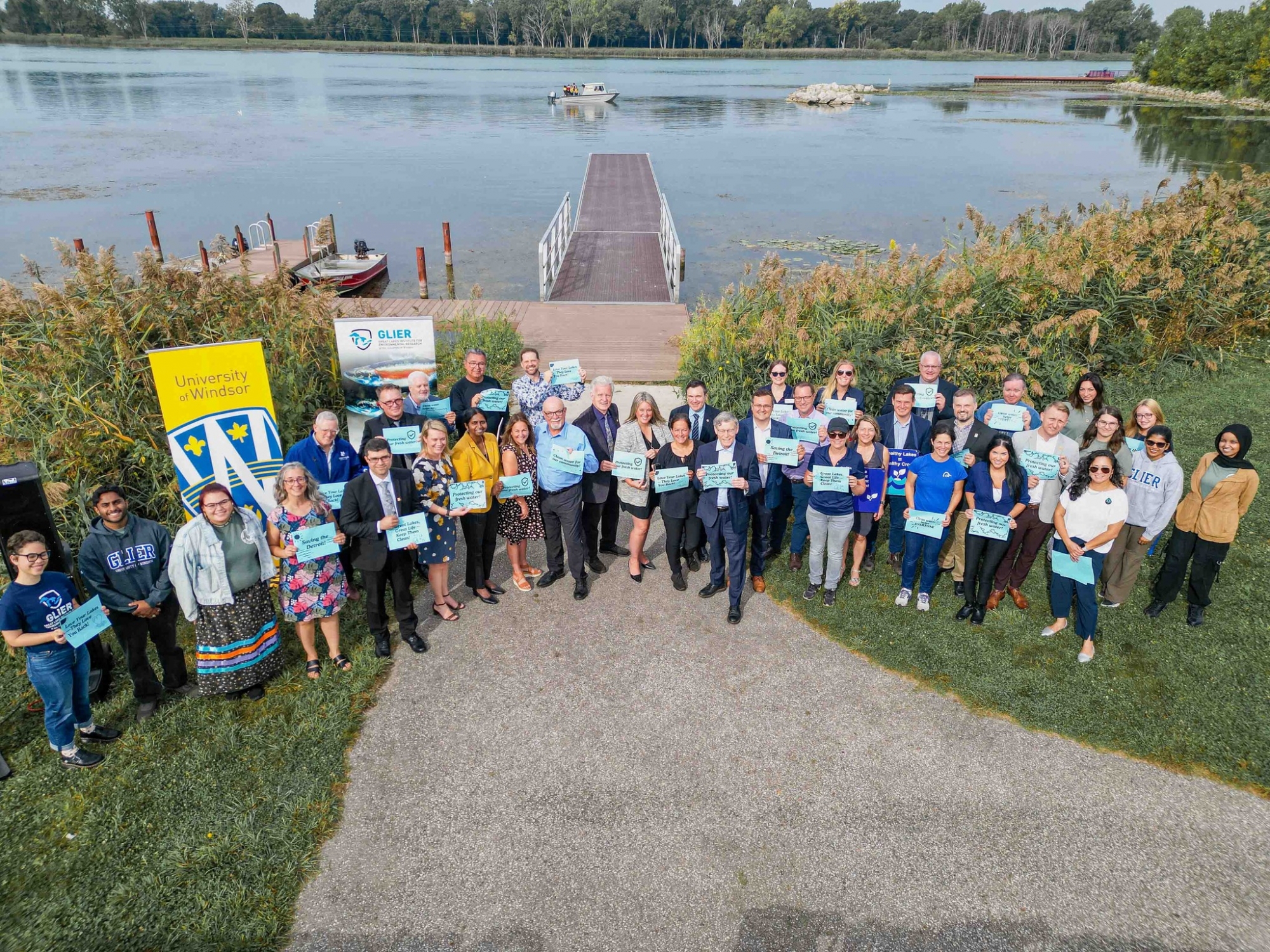 Researchers head out on a boat to explore ecosystems along the Detroit River.
Researchers head out on a boat to explore ecosystems along the Detroit River.
A federal investment of $76 million to support 50 partner-led projects will empower local groups, including UWindsor researchers, to reverse the degradations from historic pollution in the Great Lakes and connecting waterways.
The announcement Friday at the University’s Freshwater Restoration Ecology Centre in LaSalle amounts to one of the largest single investments in freshwater restoration in Canadian history, said environment minister Steven Guilbeault.
“The importance of protecting and preserving Canada’s freshwater, including the Great Lakes, is crucial,” he said.
Among the projects funded through the Great Lakes Freshwater Ecosystem Initiative are:
- efforts led in part by the University of Windsor, the Essex Region Conservation Authority, and Flowers Canada Growers to tackle harmful algal blooms in Lake Erie by reducing phosphorus loads;
- work by the Essex Region Conservation Authority to restore and protect vital wetland habitats in the Detroit River Area of Concern, the largest and best quality wetland complex and re-create a historic open-water wetland at the south end of Fighting Island; and
- the Chippewas of the Thames First Nation implementing best management practices in the Thames River watershed to reduce phosphorus loads from reaching Lake Erie.
The fight against algal blooms will involve innovative technology to remove and recover phosphorus from surface water in the Leamington-Kingsville area, said professor Chris Weisener of the Great Lakes Institute for Environmental Research.
“With significant support from Environment and Climate Change Canada and Ontario Greenhouse Vegetable Growers, we will be able to advance our understanding of phosphorus dynamics and develop innovative solutions to reduce nutrient runoff,” Dr. Weisener said. “This partnership exemplifies how working together can lead to meaningful environmental improvements, benefiting both our agricultural sector and the health of the Great Lakes.”

Terry Duguid, Parliamentary Secretary to the Prime Minister and Special Advisor for Water, alongside UWindsor researchers and local partners, celebrates the historic $76 million federal investment in freshwater restoration at the University of Windsor’s Freshwater Restoration Ecology Centre in LaSalle on Friday, Sept. 20, 2024. (Photo by University of Windsor)
Guilbeault said the investment is targeted toward improving water quality and ecosystem health so that wildlife can once again flourish in areas of concern, including the Great Lakes and Detroit and St. Clair rivers.
“With a legacy of industrialization, high population density and present day land use allocation dominated by agriculture, the Huron-Erie corridor of the Great Lakes is faced with unique challenges to maintaining the integrity of this valuable freshwater ecosystem,” said GLIER director Mike McKay.
“Today’s announcement of federal investment through the Great Lakes Freshwater Ecosystem Initiative will bring meaningful change to communities in our backyard balancing safeguarding of this important natural resource while promoting sustainable growth and prosperity for our region.”
